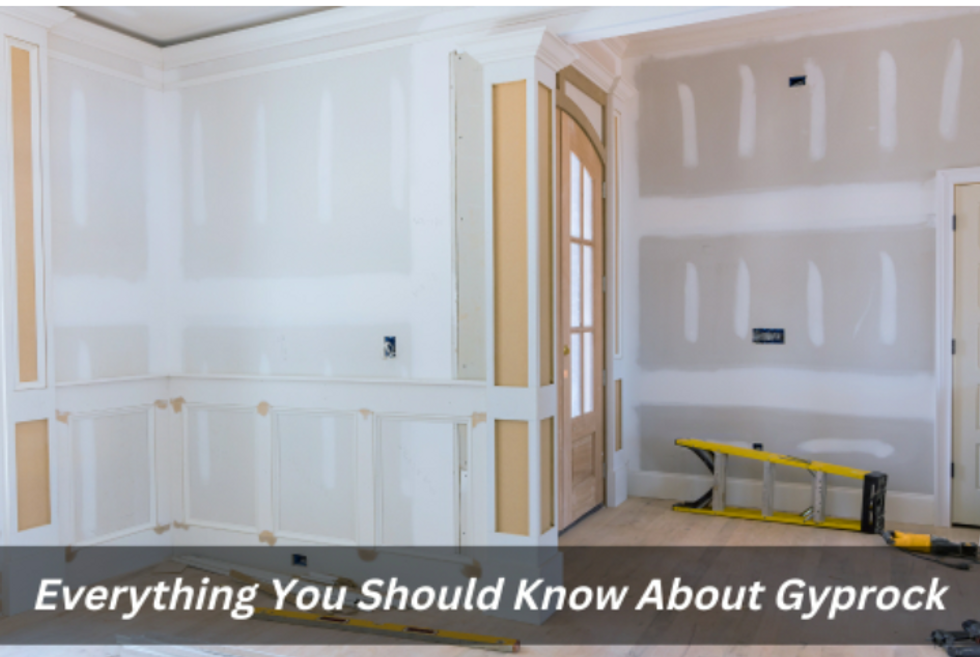.
Looking for a “gyprocker near me” online for your gyprock wall installation? Planning to do some home renovation project? Gyprock and plastering work are the two options for homeowners when it comes to wall and ceiling installation coatings.
The latter is the more traditional choice because of its longevity and ease of installation and repair. However, if you want a fast-drying, easy-to-maintain coating that can be applied over existing wallpaper or even paperless walls, gyprock may be your best option.
Gyprock is made up of clay and lime and when mixed together and baked at high temperatures they produce durable, smooth surfaces on walls and ceilings. To make gyprock ceilings into a paintable finish, manufacturers create a special formula that includes pigments designed to give the surface an attractive sheen.
As with any other exterior finish, gyprock is most effective in areas with low humidity levels such as coastal regions where there’s little to no chance for mould growth to occur.
For many years, gyprock was used primarily by builders who were remodelling homes or constructing new developments. But this isn't always the case anymore. Today, you'll find gyprock being used by interior designers and architects in addition to homeowners looking to spruce up their rooms.
The main problem with gyprock is that it does not adhere well to concrete, so it's usually recommended only for drywall applications. It also doesn't work well indoors since it won't stand up to moisture caused by condensation. This means that it has limited use indoors unless you're going to put it directly onto drywall.
Three basic types of Gyprock
There are three basic types of gyprock you will encounter. They all consist of a mixture of clay and lime, but each has unique characteristics that affect how it behaves once applied to a surface. These differences include colour, gloss level, performance under different conditions and cost.
ClayBoard
Clayboard is a low-cost alternative that has been around for decades. It consists of plain white powdery clay mixed with water. Once mixed, it must be set for 24 hours before it becomes a solid product. Because it contains no additives, it requires thorough cleaning after each installation to ensure that you don't end up with any buildups of dust or residue.
Clayboard dries very quickly, making it ideal for indoor applications. It also makes excellent wallpaper paste. Although it looks like regular gyprock, it has less depth and a slightly rougher texture than standard products.
Plasterboard
This type of material is generally preferred by contractors because it takes longer to apply than clapboard. After mixing, it must rest for four days before setting. At this point, it still needs to be cleaned thoroughly every time you install it to prevent the buildup of dust.
Standard Gyprock
This version of the finished product should have the brightest colour available. It should be able to hold a shine without fading. Unfortunately, the downside to standard gyprock is that you need to clean it regularly to keep the surface from becoming dull. It's also difficult to apply over existing finishes, which is why it's often best suited for fresh gyprock installations.
Cost vs. Performance
Because it can be expensive to buy gyprock, some DIY enthusiasts prefer to start out with a cheaper grade first. However, because these materials lack the durability required for outdoor projects, you may want to consider investing in high-standard products later on.
If you do decide to go with the lower-grade products initially, make sure your budget allows for occasional replacements down the road. Over time, the lower grades wear out more easily and require more frequent gyprock repairs.
A good rule of thumb is to get enough material to last two to three coats. If you're building a house from scratch, it would probably be a better idea to invest in high-quality products right away instead of saving money by buying the cheap stuff first.
Gyprock installation services
Installing or repairing gyprock is an art form that involves many factors outside of the actual material itself. Depending on what type of hole repair you're doing, the quality of the finish will vary significantly. Here are a few things you'll want to take into consideration when choosing gyprocking services or plasterboard installers.
Experience - Your contractor should have experience installing gyprock. The higher their rating, the better they are at working with raw materials.
Materials used
Are they using proper tools? Do they know where to locate and cut corners? For instance, some people just cut off pieces of the board and then glue them together. Others use a special tool called a trowel that smooths out the rough edges and creates a smoother overall look.
Quality controls
How many times have they done similar jobs? Have they gone through rigorous training and certification programs? These certifications show that they meet industry standards, but they also help potential clients determine whether or not they're getting the best possible results.
Warranty
Does he offer a warranty for his workmanship? This tells consumers how long he expects his workers to stay on-site if there is ever a problem, and how much he stands behind his work.
Communication
Will he communicate well with you so that you understand exactly what you're paying for and what kind of expectations you should have as a customer? This way, you won't feel pressured to pay extra for something that isn't necessary to complete the job.
References
A good contractor will provide references for any previous customers who might have had positive experiences. Always ask for referrals before hiring anyone.
If you’re still unsure where to start, you can search for a “gyprocker near me” on the internet to help you get started.
















